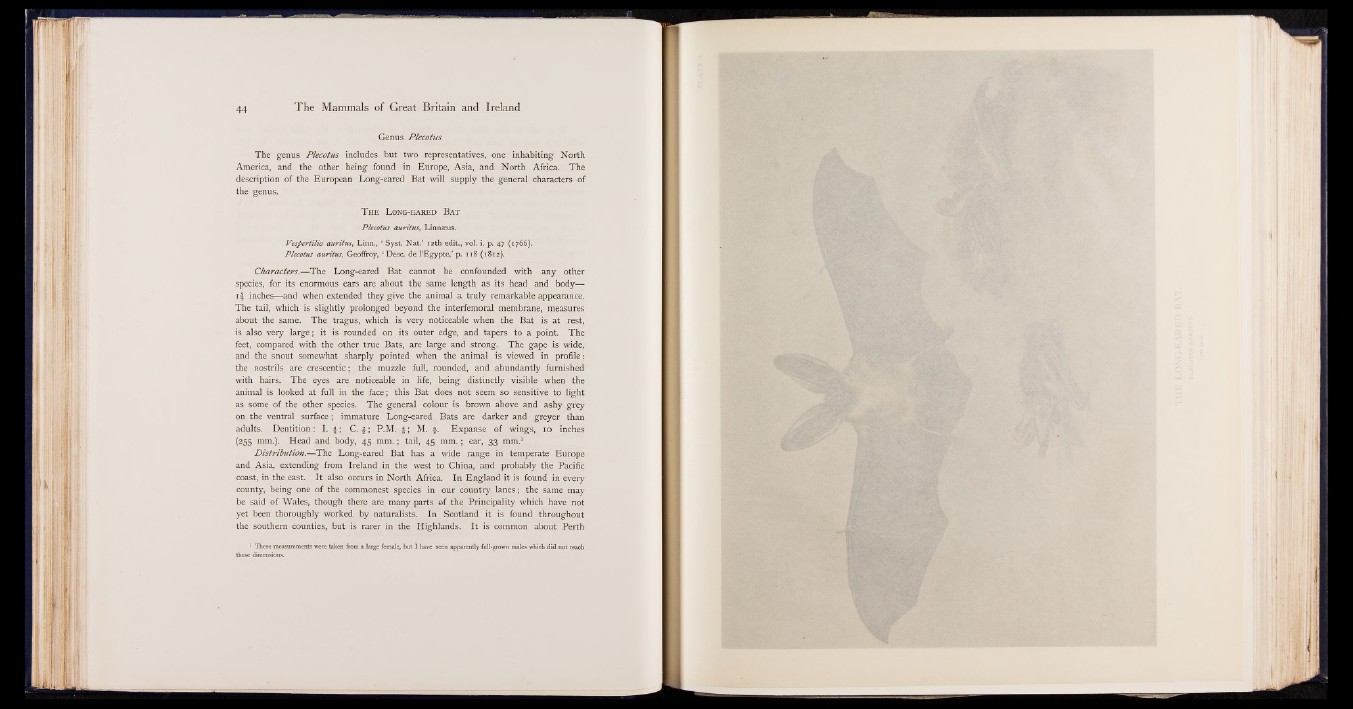
Genus Plecotus
The genus Plecotus includes but two representatives, one inhabiting North
America, and the other being found in Europe, Asia, and North Africa. The
description of the European Long-eared Bat will supply the general characters of
the genus.
T h e L o n g - e a r e d B a t
Plecotus auritus, Linnaeus.
Vespertilio auritus, Linn., ‘ Syst. Nat.’ 12th edit., vol. i. p. 47 (1766).
Plecotus auritus, Geoffroy, ‘ Desc. de l’Egypte,’ p. 118 (1812).
Characters.— The Long-eared Bat cannot be confounded with any other
species, for its enormous ears are about the same length as its head and body—
11 inches— and when extended they give the animal a truly remarkable appearance.
The tail, which is slightly prolonged beyond the interfemoral membrane, measures
about the same. The tragus, which is very noticeable when the Bat is at rest,
is also very large; it is rounded on its outer edge, and tapers to a point. The
feet, compared with the other true Bats, are large and strong. The gape is wide,
and the snout somewhat sharply pointed when the animal is viewed in profile:
the nostrils are crescentic; the muzzle full, rounded, and abundantly furnished
with hairs. The eyes are noticeable in life, being distinctly visible when the
animal is looked at full in the face; this Bat does not seem so sensitive to light
as some of the other species. The general colour is brown above and ashy grey
on the ventral surface; immature Long-eared Bats are darker and greyer than
adults. Dentition: I. C. f ; P.M. M. f. Expanse of wings, 10 inches
(255 mm.). Head and body, 45 mm.; tail, 45 mm.; ear, 33 mm.1
Distribution.— The Long-eared Bat has a wide range in temperate Europe
and Asia, extending from Ireland in the west to China, and probably the Pacific
coast, in the east. It also occurs in North Africa. In England it is found in every
county, being one of the commonest species in our country lanes; the same may
be said of Wales, though there are many parts of the Principality which have not
yet been thoroughly worked by naturalists. In Scotland it is found throughout
the southern counties, but is rarer in the Highlands. It is common about Perth
1 These measurements were taken from a large female, but I have seen apparently full-grown males which did not reach
these dimensions.